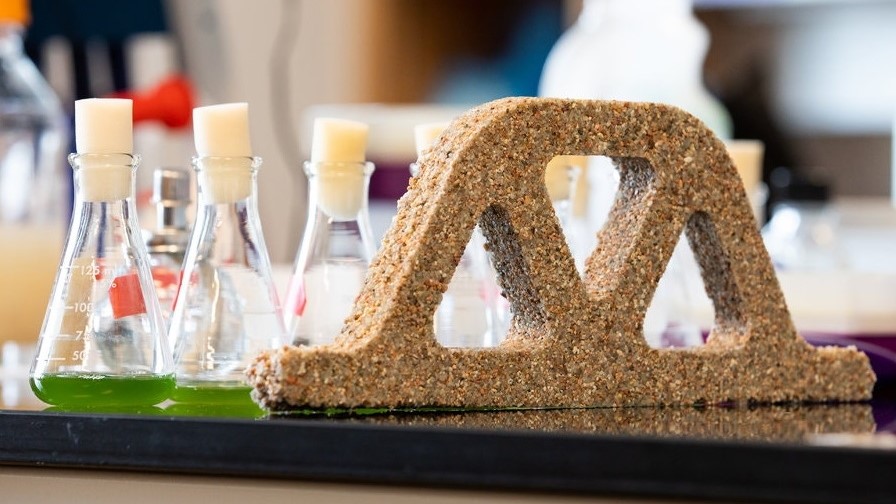
Materials that have the ability to respond to their environment and “heal” buildings and roads have the potential to deliver “major change” in the built environment.
That’s according to a new report by the Royal Society that explores the potential of new and transformative “animate materials” that are created by humans but emulate the properties of living systems.
The Royal Society defines animate materials as being sensitive to their environment and able to adapt to it in different ways to better perform their function.
It predicted a future where animate materials could allow buildings to dynamically repair themselves, requiring new standards of construction, architecture and design, as well as new skill sets among workers.
The report splits animate materials into three categories: active (they can change their properties or perform actions often by taking energy, material or nutrients from the environment); adaptive (they can sense changes in their environment and respond in a way that maintains or promotes their function); and autonomous (they can ‘decide’ through internal computation on an appropriate response to signals or changes in the environment).
Construction a ‘major area’ of research
The Royal Society said road repair was a “major area” of research, as the annual highway maintenance budget for England and Wales is £3.5bn. Technologies to prevent the formation of potholes include the 3D printing of asphalt patches to cover cracks identified by driverless cars, and heating roads using infrared, microwave, or magnetic energy sources.
Other researchers are working on techniques to promote self repair, including adding capsules to asphalt and concrete that crack when they are damaged to release healing agents. In asphalt, the capsules can be filled with oil-based bitumen solvents. In concrete, the capsules are often made with soft polymers such as gelatin or gum Arabic filled with epoxy adhesives or sodium silicate, which mineralises on exposure to air and water.
Meanwhile, researchers are also experimenting with “living bricks”, made by mixing Synechococcus bacteria with additives such as gelatin, calcite and sand. These materials can be regenerated in response to temperature and humidity changes.
The Royal Society said that some of the biggest economic gains could be made from increasing the “animacy” of materials in civil and structural engineering. It said: “Although self-healing concrete and asphalt are not highly animate, their development and commercialisation could result in longer lasting, safer buildings and roads that require significantly less spending on maintenance. The construction industry is estimated to have spent around £8bn–£9bn annually on repair and maintenance of the building infrastructure of the UK in recent years.”
Early examples of self-healing materials
The report pointed out that adaptive ‘self-healing’ materials have already existed to a degree for millennia, citing the example of lime mortar, in use since the Egyptian pyramids, which “heals” itself by growing new crystals in cracks when water enters, enabling it to react with carbon dioxide in the air.
Construction already contains other examples of materials with a limited capability for adaptive self healing. Asphalt mixture in roads displays some self-healing properties as it contains both gravel and bitumen. The bitumen can flow into small cracks in the material, however the process is very slow due to the high viscosity of bitumen and is frequently insufficient to stop cracks developing.
The Royal Society said it wanted to support interdisciplinary efforts in the field of animate materials, as well as to improve understanding of their potential.
The report said: “Imagine buildings, roads, bridges, walls and perhaps entire cities that have qualities like these, composed of building blocks that can mimic some of the characteristics of cells and that operate autonomously together to promote growth, adaptation and healing. These are ‘animate materials’.
“Self-healing materials are at the forefront of the field, with self-repairing paints already commercially available and multiple projects exploring possibilities for self-healing asphalt, concrete and fibre-reinforced polymers, such as those used in aircraft. However, these only represent early branches of animate materials… Other very different branches may develop out of a diverse range of research now taking place into life-replicating qualities of materials at the molecular level. As understanding of animate materials evolves, multiple applications may emerge across many sectors.”










